Guide to Nerja
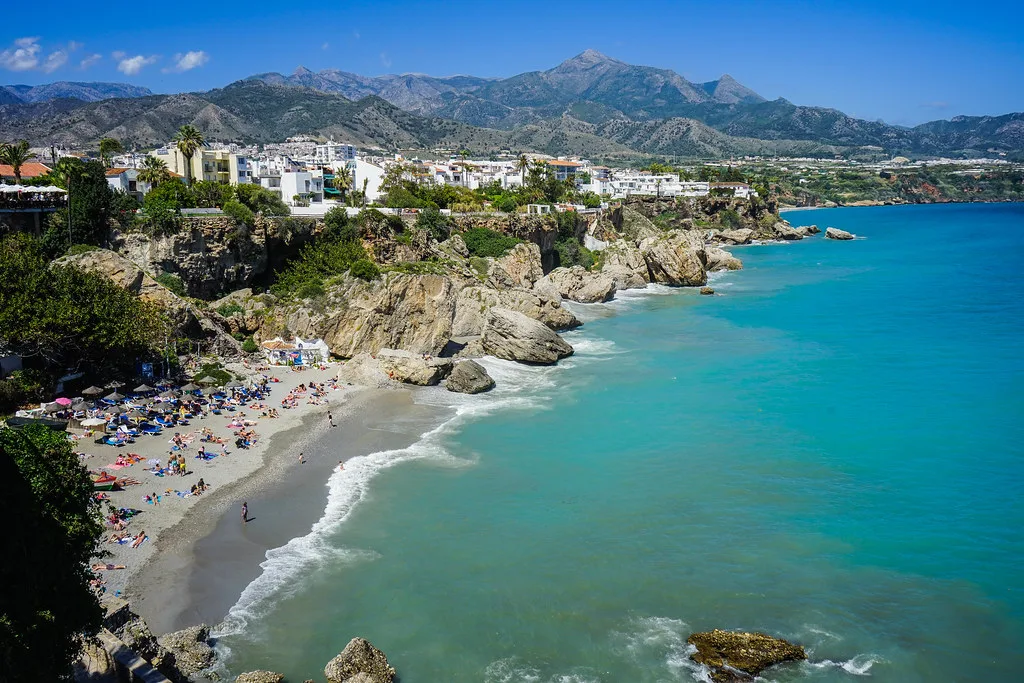
Facts:
- Nerja is a seaside municipality on the Costa del Sol, about 50 km east of Málaga.
- Nerja enjoys some 3,500 hours of annual sunshine and temperatures that average 30ºC in summer and 15º during the short winter
- Nerja comes from the muslim name Narixa which means “abundant source”.
- Nerja has 14 km of coastline and three rivers: Rio Seco, Rio de la Miel and Rio Chillar.
- Nerja has a population of approximately 21,061 persons.
- Nerja is famous for its caves, discovered in 1959.
- Nerja’s twin towns are Pescia in Italy and San Juan in Argentina.
- Famously known for its incredible beaches, ideal for watersports.
History
Nerja is part of the comarca of La Axarquía, on the southern Mediterranean coast, more or less 50 km east of Málaga.
Under Muslim rule, the town was called Narixa, meaning “abundant source” from which the towns’ present name derives.
The town has a very long history, evidenced by the primitive paintings found in the renowned Nerja caves. The caves were discovered in 1959 and are now a popular tourist destination. Visitors to the caves can see the view of the remains of an ancient inhabitant of Nerja.
Before the area was taken over by the Arabs in the early 8th century, the Romans had built three settlements here, such as the Detunda, of which large remains can now be seen.
The acclaimed tree-lined viewpoint Balcón de Europa is found in the centre of the old town. From here you have the most incredible panoramic view across the Mediterranean Sea. The viewpoint was famously given its name by King Alfonso XII, as he visited the area in 1885 and was captivated by the scene following a disastrous earthquake. A life-size statue of the king can be found standing by the railing of the viewpoint.
Nerja today
The town has resisted the redevelopment happening in the area and high rise apartment blocks; favouring the classic Andalusian style and remaining a charming seaside town. The town is quite often referred to as the “Jewel of the Costa del Sol”.
Nerja is one of the most attractive holiday hotspots on the Costa del Sol as it attracts a large number of holidaymakers who prefer the authentic Spanish culture that the town exudes, and the powdery sand beaches with sparkling clear water.
Walking through the old town you will find that it is made up of narrow, winding streets with whitewashed houses overflowing with geraniums, cosy local shops and fabulous authentic squares such as Plaza España which has some very nice churches and restaurants. Plaza Tutti Frutti is full of late-night bars and clubs for those who wish to experience the local nightlife.
The people of Nerja are proud of their old fishing town’s history and will happily point you in the right direction, should you lose your way in the snug streets.
One of the bigger rivers flowing through Nerja, Rio Chillar, is popular with tourists as it is often used for Barranquismo, a sports activity in which you walk up the river reaching the mountains, passing by waterfalls and beautiful landscapes along the way. Truly an incredible experience.
It is very easy to get to Nerja from Málaga. From the aeroport you can take the C1 train to Maria Zambrano train station, and from here you can hop on a bus to Nerja. The trip takes around an hour and costs under 5 euro for a one-way ticket. It is also possible to rent a car at the aeroport in Málaga.
Attractions we recommend
Balcón de Europa
The Balcón de Europa is, without doubt, Nerja’s most iconic landmark as well as the focal point of the town.
It is a large balcony viewpoint which overlooks the Mediterranean Sea and the rest of the Costa del Sol. It is even possible to see the beautiful Sierra Nevada mountains.
The viewpoint is built upon a former fortress and gun battery and was formerly known as “La Batería”. However, in 1885 when King Alfonso XII visited the town, while inspecting the damage caused by an earthquake, he is said to have been so enthralled with the view that he exclaimed “This is the Balcony of Europe”.
Many cannons were housed strategically in towers along the coast and were used primarily by the French against pirate raids and against the British.
These days, the Balcón de Europa is a heaving tourist attraction with many restaurants, bars and ice-cream parlours.
In the summer months, the viewpoint is the stage of many concerts and other big celebrations.
Situated right on the edge of the famous Balcón de Europa, is the Church of el Salvador – Iglesia El Salvador – a baroque-neoclassical style church finished in 1697.
A popular church set in an unbeatable location, the church has one of the longest marriage waiting lists on the Costa del Sol.
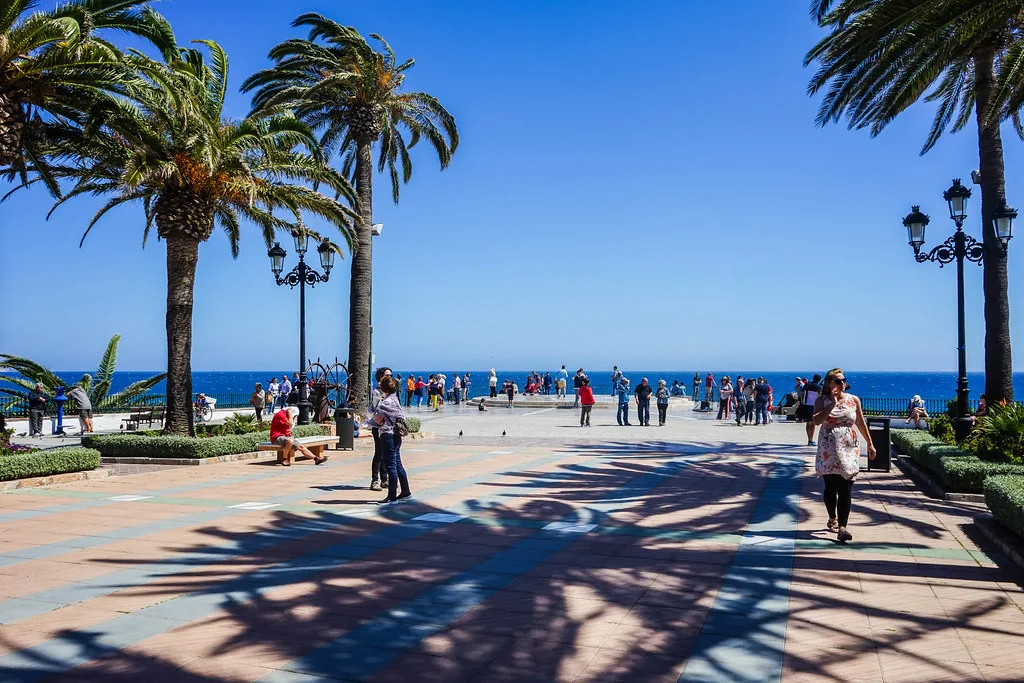


Cuevas de Nerja
The Nerja caves were discovered in 1959 by a group of local teens from Maro. They were out searching for the secret beach, instead they accidentally stumbled upon one of the most important geological finds of our era.
The caves are located just a 10 minute drive from the centre of the town. They are home to the world’s oldest Neanderthal cave paintings, recently dated to be more than 10.000 years old.
The caves are approximately five kilometres in length and the visit takes around 45 minutes. Some of the galleries are not available to the public as the cave paintings are too fragile and can be easily damaged. However, some of the galleries are open to the public and visiting them makes for a fascinating day out for the whole family.
Tickets cost 14 euros for adults and 6 euros for children. Children under the age of 6 can enter for free. It is also possible to buy a combined ticket (includes entry to the caves, tourist train and the Nerja museum), which costs 15 euros for adults and 10 euros for children. If you purchase tickets online, you can save 2 euros. A guided tour costs an additional 2 euros.
Beaches & Watersports
Nerja has some of the most beautiful beaches east from Málaga, with some of the most incredible golden sand and crystal clear waters you will experience on earth.
Situated just 8 km from the town centre you will find Maro Beach – Playa de Maro – which was voted the best beach in Andalusia and the second overall for the whole of Spain back in 2013. The 500 m of “wild” beach of crystalline waters and golden sand, protected by steep cliffs, truly makes it a breathtaking place.
Another very popular beach in Nerja is called Playa Burriana. This beach is sandy and extremely wide providing enough space for hundreds of sunloungers. It is frequently visited by tourists as well as by the locals.
Nerja is a good place for water sports. The rocky limestone cliffs have created a spectacular natural landscape, making any kayaking trip through Maro completely unforgettable. Kayaking and paddleboarding is the most popular water sport in Maro and excursions leave daily from many beaches nearby. The tours guide you past the high cliffs, into hidden caves and to see the stunning Maro waterfalls. An excursion lasts approximately 2.5 hours and costs 25 euros per person. You can read more about the tours here.
Nerja is also a beautiful place for snorkelling and scuba diving. The idyllic coastal strip of Cerro Gordo Natural Park borders Maro beach. The area here is protected which means it is not allowed to go fishing within the area, and so over the years this has led to an explosion of marine life.
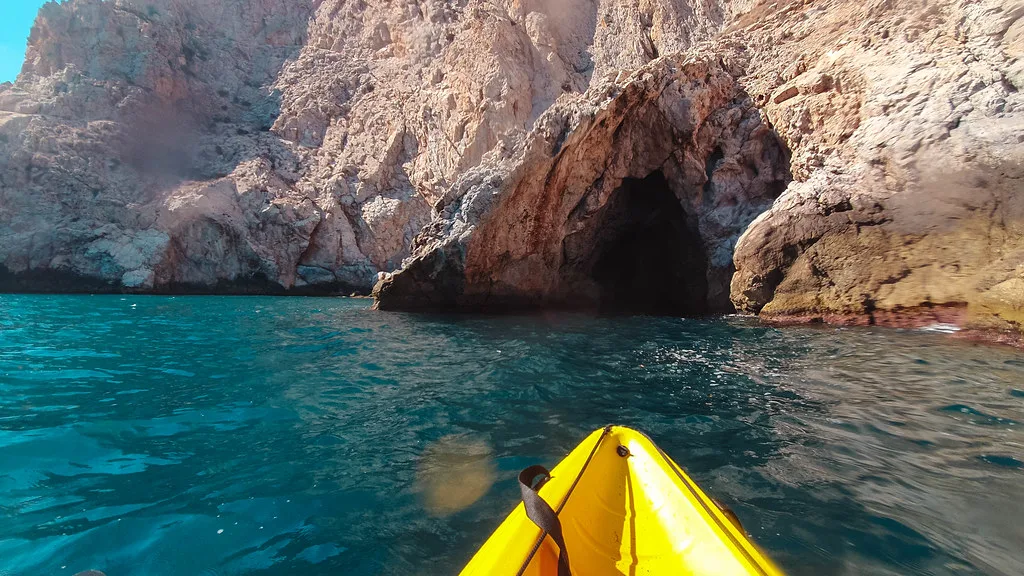
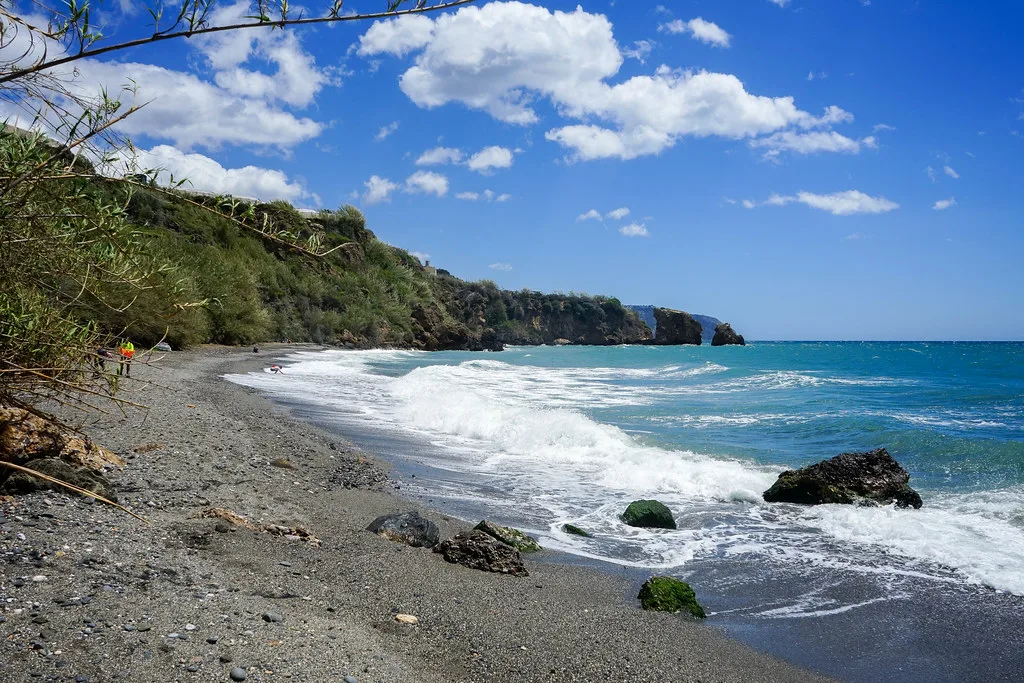
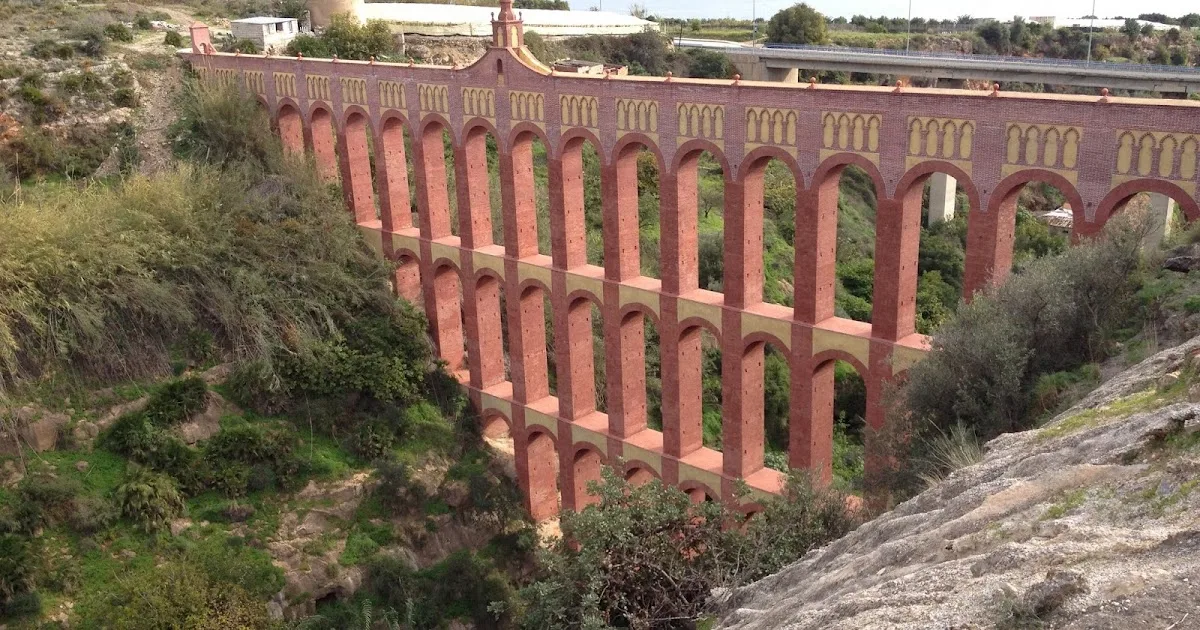
Eagle Aqueduct – Acueducto del Águila
This unconventional piece of historic Spanish architecture is located in the countryside just outside of Nerja town. It is also known as the Eagle Bridge – Puente del Águila – a structure that was built in the 19th century to transport water into the neighbouring sugar cane factory. Today the aqueduct is used for local irrigation.
The aqueduct is characterised by horseshoe-shaped arches and it is framed with a mudéjar-style spire. The very top of the bridge has a weather vane shaped like a double-headed eagle from which the aqueduct takes its local name.
You can access the aqueduct by following the same route as you would to go to the Nerja caves, but don’t take the turning for the caves on the roundabout, instead keep going towards Nerja. After about 200 m you will see the bridge on your right hand side. It is also possible to enjoy the view of the bridge from afar or walking there from the nearby villa Maro.
Restaurant Oliva
Opened in 2010 by Jim Ranzijn and Carlos Pardo, Restaurante Oliva captures the essence of Mediterranean cuisine in a single word.
Oliva is located a stone’s throw from the Balcón de Europa and the restaurant has been voted one of the best on the Costa del Sol. This is a classy venue with a contemporary and minimalistic design, with a large terrace for alfresco dining.
The restaurant is forever evolving, the menu is short and seasonal and most of the ingredients used are locally sourced. The restaurant serves traditional Mediterranean cuisine with a modern twist. In 2016 it got the recommendation in the Michelin Guide and since then it has been rewarded with this recognition every year.
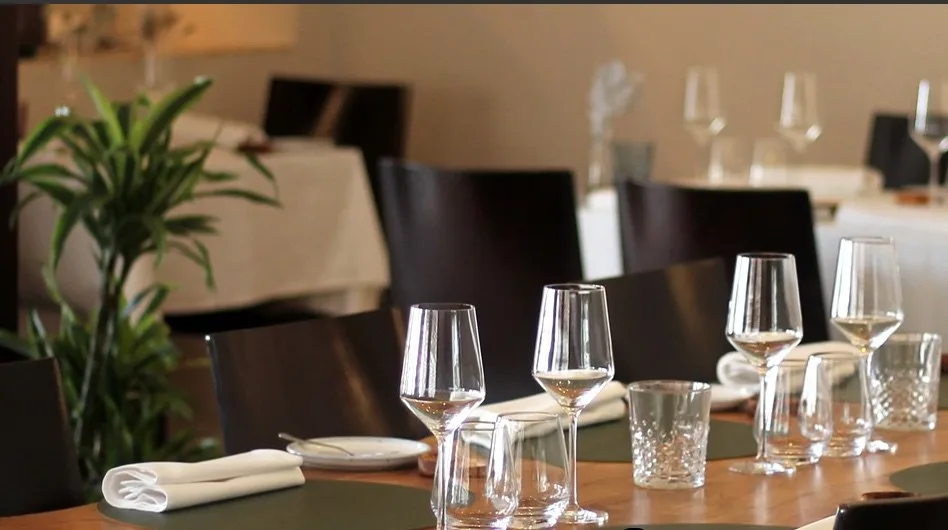
Nerja has five very good Spanish primary and secondary schools. Additionally, there is an international school in Almuñécar which is just a bus ride away. The main shopping happens in the centre of Nerja, the streets are filled with local shops and larger stores as well.
The town’s medical centre is situated on the main road coming into Nerja and the emergency department is open 24/7 although serious incidents are dealt with at the hospital in Vélez Málaga. The practice is open for appointments Mondays to Fridays from early morning to afternoon. Furthermore, there are several private practices which are on call 24/7 and most speak English.
In terms of property, Nerja has different parts to it – the old town, the new part of town and Burriana, which is near the famous beach Playa Burriana. There are also some exclusive urbanisations such as Capistrano village where a lot of expats live or own property. A lot of foreigners who seek the peaceful, authentic Spanish lifestyle decide to purchase property in slightly quieter areas such as Maro and Frigiliana.